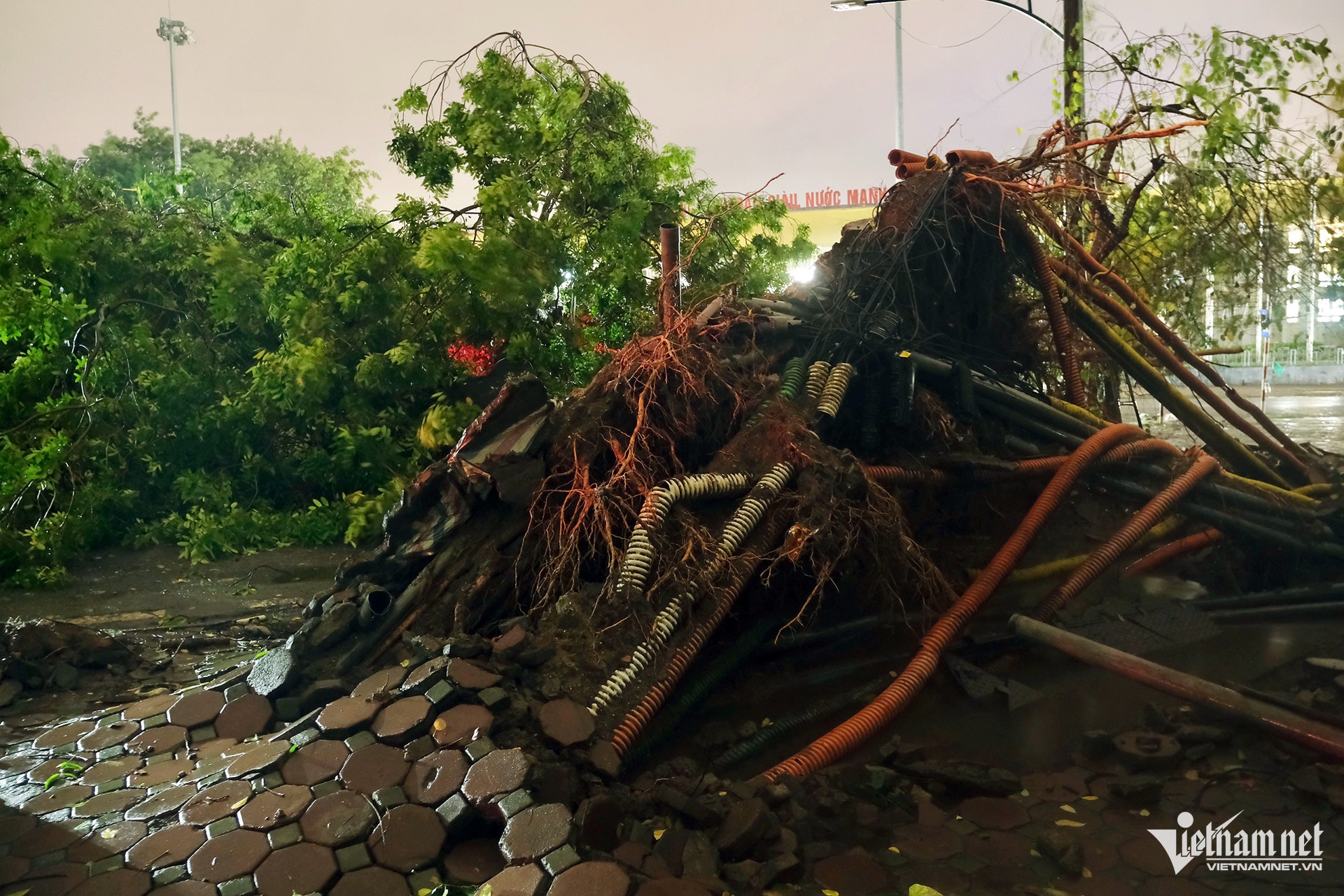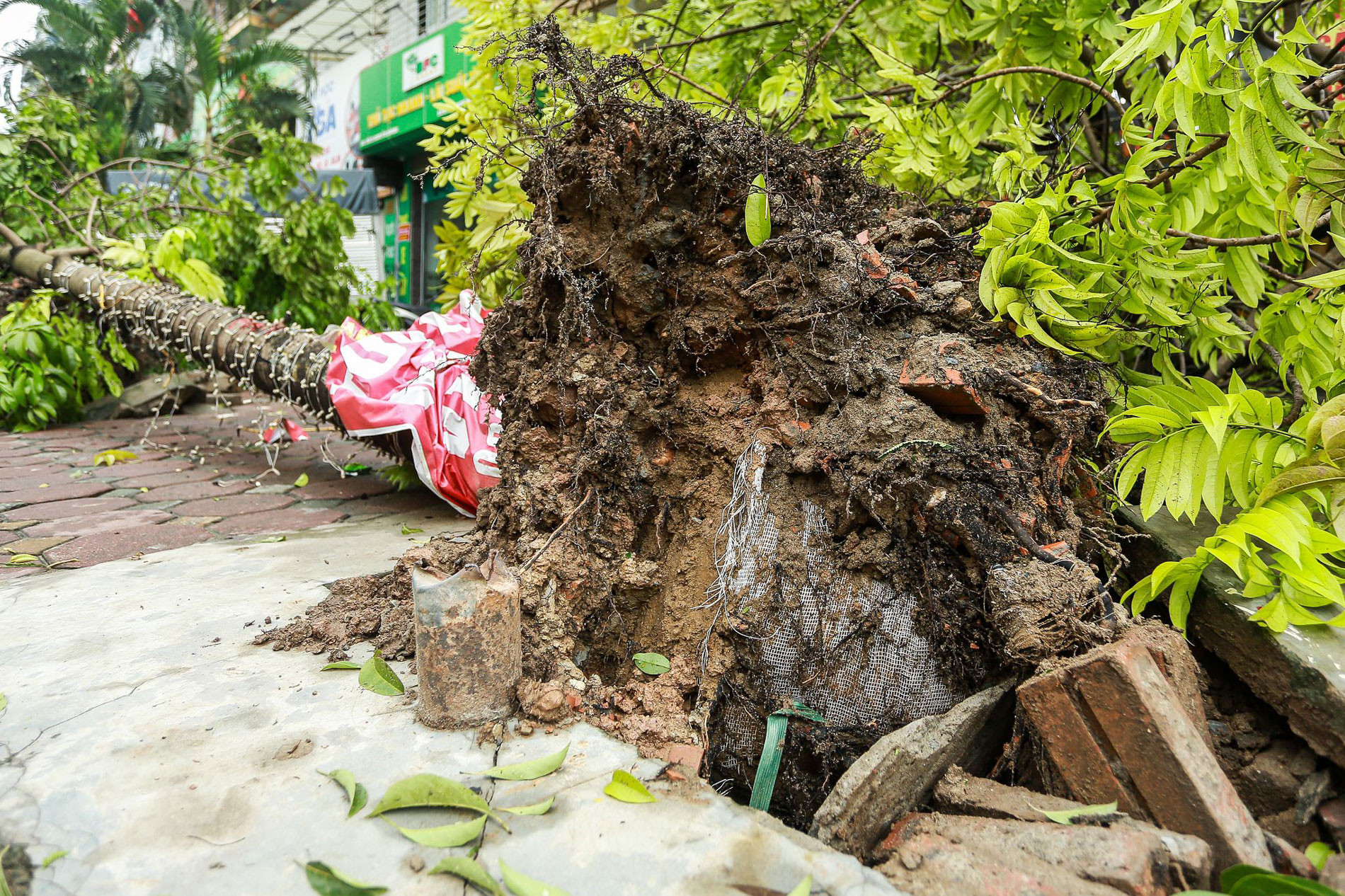
Hanoi reported that Typhoon Yagi led to the fall of over 25,000 trees, with more than 24,800 concentrated in the districts of Hoang Mai, Long Bien, Gia Lam, Dong Anh, and Nam Tu Liem.
Despite efforts to manage the aftermath of the storm, as of September 9, fallen and broken trees still cluttered the streets. Notably, several century-old trees linked to historical landmarks were also damaged, which has caused considerable regret.

Many fallen trees had shallow root systems, with some having their roots harshly cut during sidewalk renovations, while others remained wrapped in their original soil bags. Ancient trees on Thanh Nien Street (Tay Ho district) and flame trees with nearly rotted roots were among the casualties.
Nguyen Hoang Street (Nam Tu Liem district) had trees with shallow or newly developed horizontal roots. Many of these trees still had their soil bags around their roots, indicating poor planting practices.
Prof. Dr. Dao Xuan Hoc, former Deputy Minister of Agriculture and Rural Development, commented that tree falls during storms are somewhat inevitable. “Even cars can be blown away during strong storms,” he said, acknowledging the persistent issues in Hanoi's tree planting practices.
Prof. Hoc identified that many tree species planted in Hanoi are unsuitable for urban environments and are prone to breakage during storms. Trees like flamboyant and Barringtonia are particularly vulnerable. He also highlighted the need for improved planting techniques.

Prof. Hoc recommended planting smaller, healthier trees that are less likely to break during adverse weather. He suggested digging deeper holes (about 1 meter) for small trees, gradually filling in the soil as they grow, and using stakes for support to prevent them from falling during storms.
Architect Ngo Doan Duc, former Vice President of the Vietnam Association of Architects, agreed that tree falls during storms are unavoidable but present an opportunity to reassess tree planting practices. He emphasized the importance of selecting suitable tree species for urban areas and proper care and pruning techniques.
“Newly planted small trees may fall due to poor planting techniques, while large trees that are uprooted may suffer from inadequate pruning,” Mr. Duc noted, highlighting that many trees that fell during Typhoon Yagi had horizontally growing root systems.
To address these issues, Hanoi needs to refine its tree care practices, especially in pruning before stormy seasons. Choosing urban tree species with tap roots and suited to local soil conditions will help ensure stronger, more resilient trees in the future.
Quang Phong